Introduction
The world is a treasure trove of natural wonders, from iconic landmarks to hidden gems. While the Grand Canyon and the Great Barrier Reef may steal the spotlight, there are countless other breathtaking spectacles waiting to be discovered. Prepare to be amazed by these 15 astonishing natural wonders you’ve likely never heard of.
15 Astonishing Natural Wonders
- Magnetic Hill, Ladakh, India
- Wadi Nakhar, Oman (The Grand Canyon of Oman)
- Spotted Lake, British Columbia, Canada
- The Mendenhall Ice Caves, Juneau, Alaska
- Pamukkale, Turkey (Cotton Castle)
- Naica Crystal Caves, Chihuahua, Mexico
- The Glowworm Caves, Waitomo, New Zealand
- Antelope Canyon, Page, Arizona
- Deadvlei, Namib-Naukluft Park, Namibia
- Lençóis Maranhenses National Park, Brazil
- Salar de Uyuni, Bolivia (The World’s Largest Salt Flat)
- Fly Geyser, Nevada
- Socotra Island, Yemen
- Tsingy de Bemaraha Strict Nature Reserve, Madagascar
- The Door to Hell, Derweze, Turkmenistan
1. Magnetic Hill, Ladakh, India

Located in India’s remote Ladakh region, Magnetic Hill is a place where gravity seems to go haywire. Cars left in neutral gear appear to roll uphill, creating a mind-bending optical illusion. Although it looks like magic, the unique surrounding landscape and an obstructed horizon contribute to this fascinating phenomenon.
2. Wadi Nakhar, Oman (The Grand Canyon of Oman)
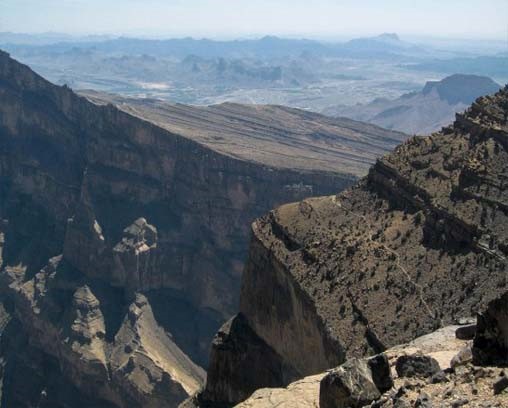
Oman boasts its own ‘Grand Canyon’—the magnificent Wadi Nakhar. Carved into the Al Hajar mountain range, this rugged valley features rare plant life and a stunning blue water body. Adventurous travelers can hike the Balcony Walk, a narrow trail perched on the canyon’s edge, leading to an abandoned village.
3. Spotted Lake, British Columbia, Canada
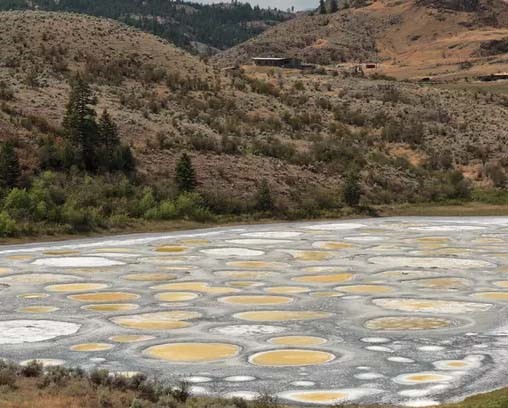
Spotted Lake is a true marvel of nature. During the hot summer months, the water evaporates, leaving behind colorful mineral pools that create a polka-dotted landscape. This unique phenomenon is due to the lake’s high concentration of minerals like magnesium sulfate, calcium, and sodium sulfates.
Read More: 15 Heartbreaking Facts About the World’s Most Endangered Species
4. The Mendenhall Ice Caves, Juneau, Alaska
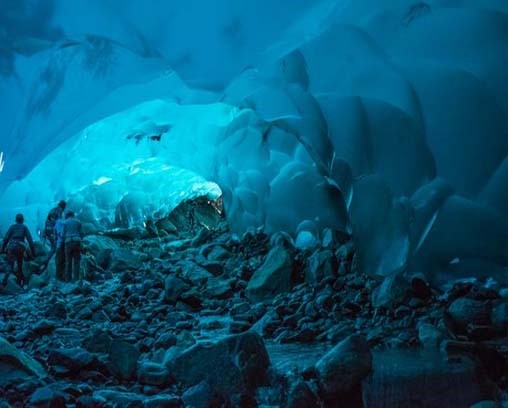
Hidden within the Mendenhall Glacier lie the ethereal Mendenhall Ice Caves. These dazzling caves, sculpted by glacial meltwater, showcase vibrant blue ice formations. Reaching the caves requires a kayaking adventure and an ice climb, adding to their allure.
5. Pamukkale, Turkey (Cotton Castle)
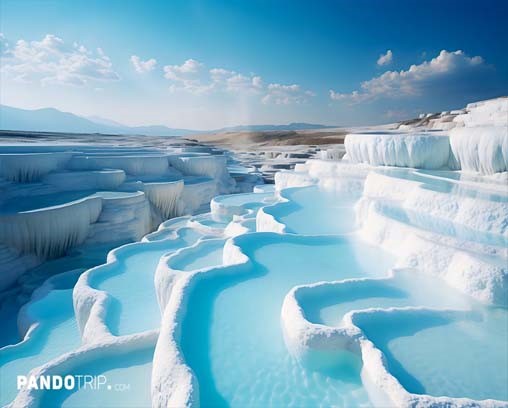
Pamukkale, translating to “cotton castle,” is an otherworldly spectacle of cascading white terraces. This natural wonder is formed by mineral-rich hot springs that flow down the hillside, creating a landscape resembling a frozen waterfall. Visitors have bathed in these thermal pools for centuries, believing in their healing properties.
6. Naica Crystal Caves, Chihuahua, Mexico
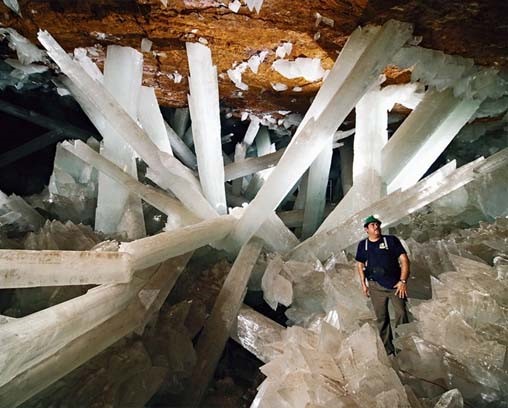
Deep within the Naica Mine lies a world of crystalline giants. The Naica Crystal Caves are home to some of the largest natural crystals ever found, formed over millennia by hydrothermal fluids. These gypsum crystals, reaching up to 50 feet in length, create a breathtaking scene reminiscent of an alien world.
Read More: Top 15 Mind-Blowing Space Facts That Will Change Your Universe
7. The Glowworm Caves, Waitomo, New Zealand
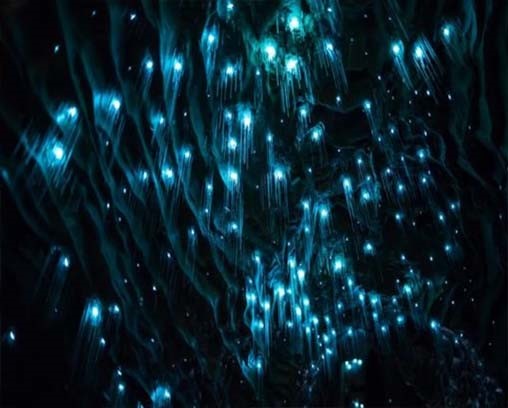
Image source: nationalgeographic
New Zealand’s Waitomo Caves offer a magical experience. Thousands of bioluminescent glowworms, known as Arachnocampa luminosa, illuminate the cave ceilings and walls, transforming the darkness into a starry night. A gentle boat ride through the caves provides a front-row seat to this dazzling natural light show.
8. Antelope Canyon, Page, Arizona
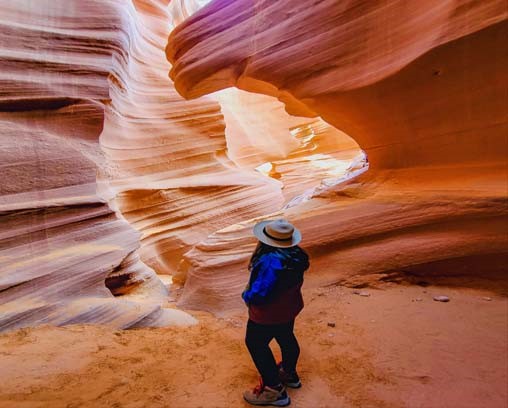
Antelope Canyon is a masterpiece of nature’s artistry. This slot canyon, carved by water erosion over centuries, boasts flowing sandstone walls that seem to dance and twist. As sunlight filters through the narrow openings, it paints the canyon in brilliant shades of orange, red, and purple, creating a photographer’s paradise.
9. Deadvlei, Namib-Naukluft Park, Namibia
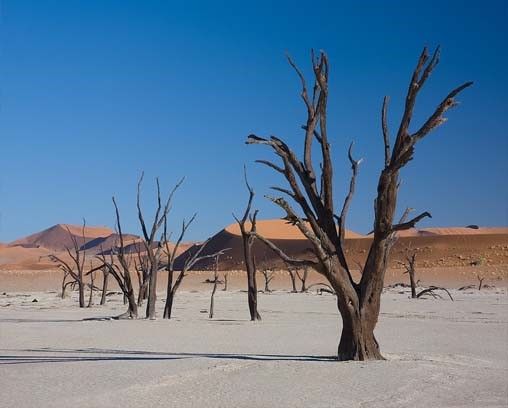
Deadvlei is an eerily beautiful landscape in Namibia’s vast desert. This dried-up clay pan, punctuated by skeletal camelthorn trees scorched black by the sun, creates a stark and surreal scene. The contrast between the white clay, the rusty red dunes, and the dark trees offers a haunting and unique visual spectacle.
Read More: 15 Astonishing Facts About the Human Body That Will Change Your Perspective
10. Lençóis Maranhenses National Park, Brazil
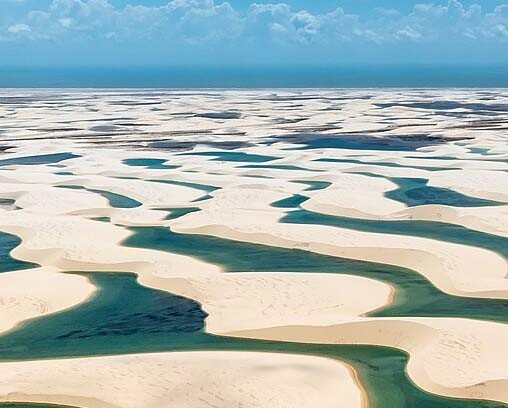
Brazil’s Lençóis Maranhenses National Park looks like a desert dreamscape. However, the vast expanses of white sand dunes are periodically interrupted by shimmering turquoise lagoons filled with rainwater. This unusual landscape creates a captivating contrast and a unique ecosystem for aquatic life.
11. Salar de Uyuni, Bolivia (The World’s Largest Salt Flat)
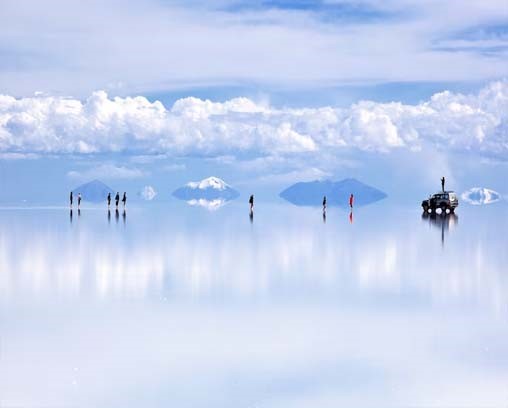
Bolivia’s Salar de Uyuni is the ultimate natural mirror. This immense salt flat, the world’s largest, transforms into a reflective wonderland after rainfall. The sky and clouds are seamlessly duplicated on the ground, creating an illusion of walking on air. The stark white expanse offers a sense of endlessness and otherworldly beauty.
12. Fly Geyser, Nevada
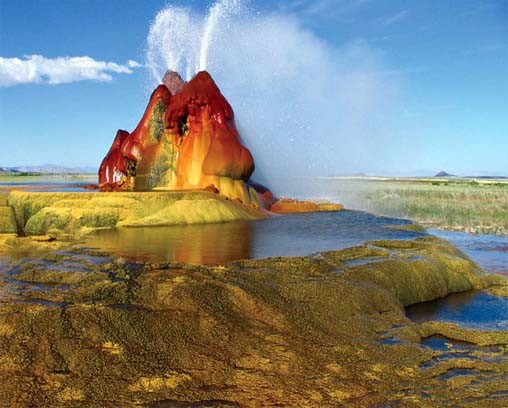
Fly Geyser is a geothermal wonder that looks like it belongs on another planet. This man-made geyser, accidentally created during a drilling operation, spews scalding water and continually deposits minerals. These deposits have formed vibrantly colored mounds that constantly change shape, creating a bizarre and ever-evolving spectacle.
13. Socotra Island, Yemen
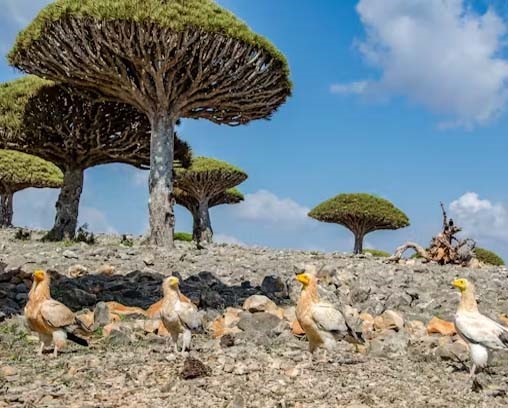
Socotra Island is an isolated archipelago with a unique ecosystem that has evolved for millions of years. Its otherworldly landscape features bizarre-looking Dragon’s Blood Trees, bulbous Bottle Trees, and a wealth of other endemic plant species. Visitors are transported to a world reminiscent of a sci-fi fantasy.
Read More: The Top 15 Inventions That Changed the World | Discover Their Impact
14. Tsingy de Bemaraha Strict Nature Reserve, Madagascar
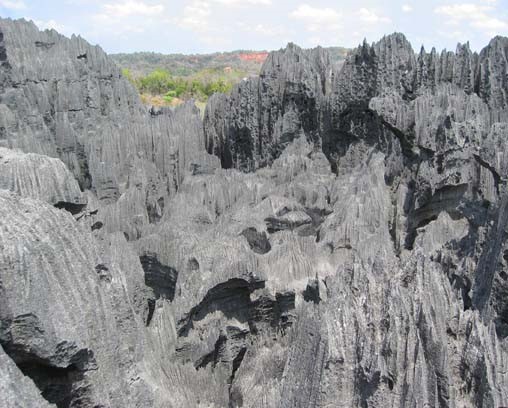
Madagascar’s Tsingy de Bemaraha is a forest unlike any other. The name ‘Tsingy’ translates to “where one cannot walk barefoot,” referring to the reserve’s vast labyrinth of razor-sharp limestone pinnacles. This unique and challenging terrain is home to a variety of fascinating wildlife adapted to its harsh conditions.
15. The Door to Hell, Derweze, Turkmenistan
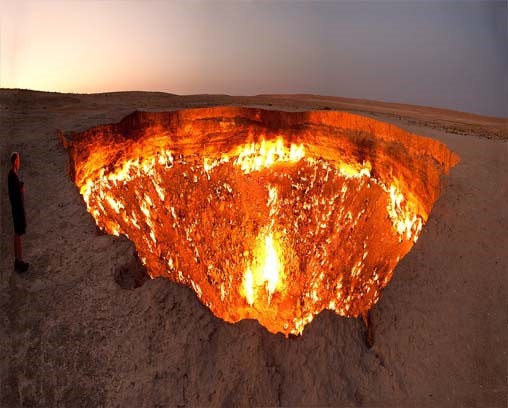
The Darvaza Gas Crater, known as the “Door to Hell,” is a fiery spectacle in the Karakum Desert. A drilling mishap led to a natural gas crater collapse, igniting a perpetual blaze that has burned for decades. The fiery glow against the desert night sky is an awe-inspiring and somewhat ominous sight.
Conclusion:
From mesmerizing caves and canyons to otherworldly deserts and fiery wonders, these hidden natural gems showcase the extraordinary diversity and awe-inspiring power of our planet. They remind us that there’s always more to explore, more to discover, and more to marvel at in the natural world. So, go forth, intrepid traveler, and seek out these astonishing natural wonders for a travel experience you’ll never forget.
15 FAQs (Frequently Asked Questions):
-
Are any of these natural wonders easily accessible?
While some of these wonders, like Pamukkale in Turkey or Antelope Canyon in the US, have developed tourist infrastructure, others are more remote. Destinations like Magnetic Hill in India or Wadi Nakhar in Oman could involve more adventurous journeys.
-
Can I visit these places responsibly and minimize my impact?
Absolutely! Responsible tourism is crucial for preserving these natural treasures. Research tour operators committed to sustainable practices, follow all rules and regulations in protected areas, and leave no trace.
-
What’s the best time of year to visit these natural wonders?
The ideal time to visit varies greatly. Some, like the Glowworm Caves, are beautiful year-round. Others, like Lençóis Maranhenses, are best experienced during the rainy season. Careful research is key!
-
Are there any natural wonders like these closer to home that I may not know about?
Very likely! Many countries and regions boast their own hidden gems. Explore local tourism websites, blogs, and nature conservation groups to discover unique wonders near you.
-
I’ve seen pictures of these places, but is the experience worth the trip in person?
Emphatically yes! Photos can never fully capture the scale, atmosphere, and the feeling of awe you get from being present in these extraordinary natural environments.
-
Is it safe to visit all of these natural wonders?
While most of these wonders are safe to visit, some come with certain considerations. The Naica Crystal Caves, for example, require specialized equipment and supervision due to extreme temperatures. The Door to Hell poses obvious safety concerns. Research potential hazards and safety precautions before your trip.
-
Are there any of these places that are particularly family-friendly?
Absolutely! Pamukkale’s thermal pools, Antelope Canyon’s mesmerizing light, and Spotted Lake’s colorful patterns offer experiences that fascinate all ages. Be sure to factor in the accessibility and the length of any required hikes or journeys when considering family travel.
-
Do I need special permits or guides to visit any of these locations?
Some wonders are located in protected areas which may require permits or have restrictions. The Mendenhall Ice Caves are best explored with experienced guides for safety. Always research local rules and access details beforehand.
-
Are there unique cultural experiences associated with any of these natural wonders?
Yes! Many of these places hold cultural significance for local communities. Spotted Lake is sacred to the Okanagan First Nation of Canada, while Socotra Island boasts an ancient and distinct way of life. Embrace opportunities to learn about the rich history and heritage associated with the place you’re visiting.
-
What other incredible but lesser-known natural wonders are out there?
The world is overflowing with hidden marvels! Explore resources like Atlas Obscura (https://www.atlasobscura.com/) or blogs focusing on off-the-beaten-path travel to discover an endless array of fascinating natural wonders.
-
Can I camp near any of these natural wonders?
Some locations offer designated camping areas nearby, allowing you to immerse yourself in the surrounding landscapes for extended periods. Deadvlei in Namibia and Lençóis Maranhenses National Park provide exceptional stargazing opportunities with overnight stays.
-
What kind of photography gear should I bring to capture these places best?
The recommended gear depends on the specific wonder. A wide-angle lens is helpful for panoramic landscapes, while caves might benefit from a tripod and a fast lens. For wildlife, a telephoto lens is handy. Always check weather conditions and gear restrictions before your trip.
-
Are these wonders at risk from climate change or other threats?
Unfortunately, many natural wonders face threats like rising temperatures, habitat loss, and tourism pressure. Choose destinations managed responsibly and consider supporting local conservation efforts to protect these unique environments.
-
Where can I find reliable information and stories about these places?
Reputable sources for further information include National Geographic (https://www.nationalgeographic.com/), nature documentaries, and travel blogs specializing in sustainable and off-the-beaten-path experiences. Seek out diverse perspectives and firsthand accounts!
-
I’m inspired! How do I start planning a trip to one of these natural wonders?
Start by narrowing down your choices based on your interests and travel style. Thoroughly research your chosen place, consider the best time to visit, look for ethical tour operators, plan your travel logistics carefully, and be prepared to embrace adventure!




